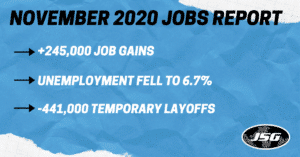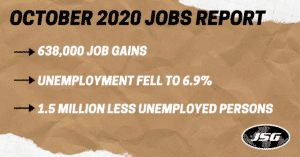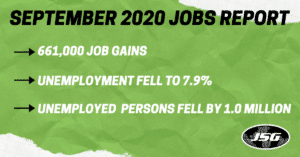
Here’s What Candidates Expect Post-COVID-19
In 2020, life as we know it was completely turned upside down. Everything we knew about our careers, hiring, and job searching changed on a

November 2020 Jobs Report: 245,000 Jobs Added
Job growth in November slowed in the U.S., according to the Labor Department’s monthly Jobs Report. Last month, employers added 245,000 jobs, a stark difference from October’s 610,000

November 2020 Jobs Report: 245,000 Jobs Added
Job growth in November slowed in the U.S., according to the Labor Department’s monthly Jobs Report. Last month, employers added 245,000 jobs, a stark difference from October’s 610,000

October 2020 Jobs Report: 638,000 Jobs Added
According to the Labor Department, U.S. employers added 638,000 jobs last month, much than economists projected. This is the sixth month in a row of

September 2020 Jobs Report: the U.S. Gains 661,000 Payrolls
The Labor Department reported that nonfarm payrolls rose by 661,000. That is the fewest gains since May and much lower than economists’ expectations of around

Jobs with the Most Demand in September
As the economy and job market continue to recover, jobless claims are finally declining. Last week (ending September 11th), new jobless claims fell by 33,000



